Last updated on Oct 15, 2025
9 Common Types of Fantasy Characters (With Examples)
Savannah Cordova
Savannah is a senior editor with Reedsy and a published writer whose work has appeared on Slate, Kirkus, and BookTrib. Her short fiction has appeared in the Owl Canyon Press anthology, "No Bars and a Dead Battery".
View profile →When you think of fantasy, your mind might drift to enchanted settings and the magical systems that govern them. And while it’s hard not to marvel at the brand-new worlds that authors are able to conjure, it’s the people and creatures that inhabit those worlds who claim readers’ emotional investment.
This list covers nine of the most common types of fantasy characters. Don’t forget to scope out the 80+ examples of our favorite fantasy characters from popular books and movies.
1. The Hero
There is no fantasy story without a Hero and a quest that needs undertaking. This is their fantasy world, and we’re just living in it (for a time). While people often think of Joseph Campbell’s template of the Hero’s Journey when it comes to fantasy story structures, the Hero can take many different forms (they can even be an anti-hero!), whether or not the story resembles Campbell’s model. The Hero might relish in their role, like Conan the Barbarian, or they may be a reluctant leader in the story’s narrative, like Bilbo Baggins (initially). Indeed, the nature of the Hero will largely depend on the particular subgenre of fantasy you're reading/writing.

Example:
As the Chosen One, Harry Potter checks off all of the standard Hero boxes: he hasn’t volunteered to be a hero, but he still feels an obligation to fulfill that role.
For the first eleven years of his life, he is unaware of the legacy he holds within the wizarding world as the Boy Who Lived. When he does learn his own origin story, he does not relish his perceived heroic notoriety — he just wants to make some friends and learn some magic in a place he feels he belongs. However, when threats present themselves and put others at risk, he doesn’t hesitate to step into the role of Hero or to put himself on the line to save others. For more fantasy books the feature heroes like Harry Potter, check out this post.
More Heroes:
- Frodo Baggins (Lord of the Rings)
- Bilbo Baggins (The Hobbit)
- Sarah Williams (Labyrinth)
- Dorothy Gale (The Wizard of Oz)
- Lucy Pevensie (The Chronicles of Narnia)
- Conan the Barbarian (the Conan books)
- Xena (Xena: Warrior Princess)
- Buffy Summers (Buffy the Vampire Slayer)
2. The Sidekick
In many ways, Sidekicks in fantasy could just as well be the Hero because they’re brave, skilled, and determined. The only reason they’re not is that the actual Hero has been anointed in some way as the person who must solve the conflict. And yet, the Hero usually wouldn’t get close to a successful resolution if not for the Sidekick.
The Sidekick doesn't only help the Hero save the day, they also stick to the Hero's side through thick and thin: while going through the trials and tribulations of being “the Hero,” the protagonist often buckles under pressure and reveals a darker side to themselves. The Sidekick sees through this falter and reminds the Hero that they can accomplish their task — while reminding the reader why we’re rooting for the Hero. If the Hero begins to take on a larger-than-life quality, it’s also up to the Sidekick to help readers see past the blinding heroic glory and continue to relate to the protagonist.

Example:
The Sidekick to end all Sidekicks: Samwise Gamgee. When we say that Samwise gives legs to the quest to destroy the One Ring and save Middle Earth from a doomed eternity, we’re speaking both metaphorically and literally. He provides Frodo with the mental and emotional strength to keep going, and when that’s not enough, he picks Frodo up and carries him up Mount Doom. Let’s just say we don’t think Bonnie would have chosen Clyde if Samwise was up for grabs.
Furthermore, Samwise is by far the most relatable character in the Lord of The Rings. He provides comic relief, moral guidance, and acts as a conduit between the reader and Frodo towards the end of the series, when Frodo begins to lose himself to the Ring.
More Sidekicks:
- Donkey (Shrek)
- Ron Weasley and Hermione Granger (the Harry Potter series)
- Gabrielle (Xena: Warrior Princess)
- Sir Kay (Legends of King Arthur)
- Inigo Montoya and Fezzik (The Princess Bride)
- Ser Bronn (A Song of Ice and Fire)
- Obern (The Iron Druid Chronicles)
- Samwell Tarly (A Song of Ice and Fire)
- Willow Rosenberg (Buffy the Vampire Slayer)
3. The Mentor
The road to solving a fantasy’s main conflict is usually long and filled with peril. And without someone who knows the ropes just a little, it would be damn near impossible for the story to be resolved. Enter: the Mentor.
Referring back to the popular fantasy story structure, the Hero's Journey, the Mentor is usually the person who either guides the Hero to answer the “Call to Adventure” (moving them from their comfort zone into the unknown), or they are waiting to welcome the Hero after they decide to accept the Call. (Other than the "chosen one" Hero, the Mentor is one of the most common tropes in the fantasy genre.)
The Mentor is typically familiar with the narrative of the conflict (perhaps they’ve seen it play out before), or they’re uniquely equipped to prepare the Hero for their journey. They don’t usually stay with the Hero for the majority of the narrative — this might be because they die while helping the protagonist, or they are off working on removing obstacles in the Hero’s path behind the scenes. But they do often appear to help save the day in crucial times of peril.
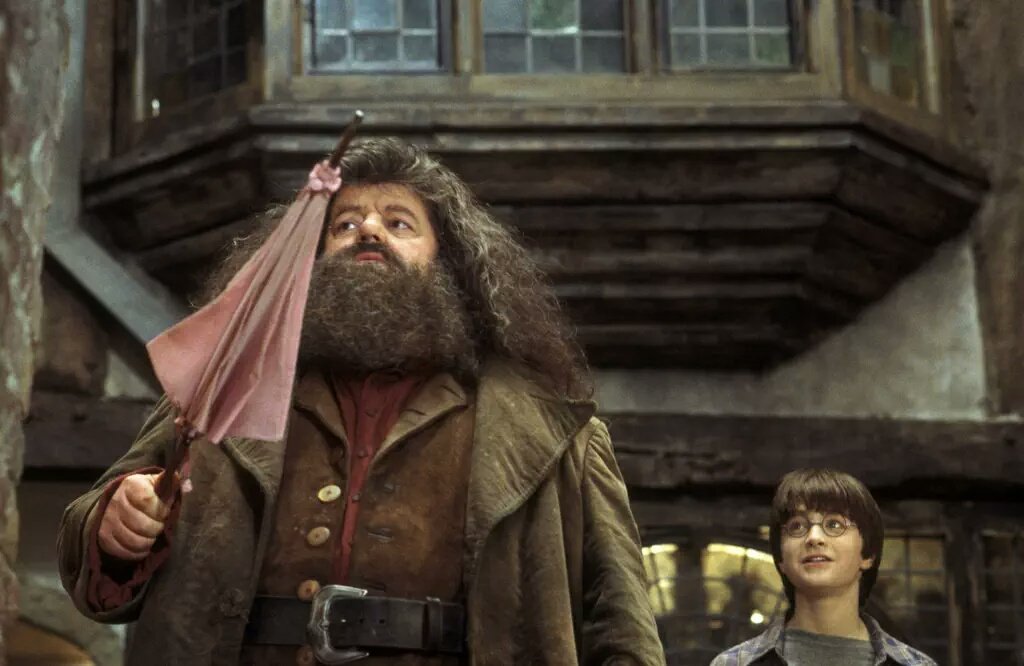
Example:
When people think of Harry Potter and Mentors, their mind likely goes to Albus Dumbledore. And for good reason. The guy has a long white beard, smiling eyes, and half-moon specs — not to mention he basically spends the whole series secretly coaching Harry to take on Lord Voldemort.
However, there’s another Mentor that gets overlooked: Rubeus Hagrid. Hagrid is the one who goes to get Harry, and ushers him into the wizarding world perched atop his flying motorcycle. He shows him the ropes and ensures he is prepared to attend Hogwarts. He is also the person Harry goes to in times of emotional need. And he often gives Harry information crucial to defeating Voldemort (though he does it by accident — or because of a little too much fun at the Flying Broomstick).
More Mentors:
- Gandalf (Lord of the Rings)
- Great Uncle Merry (The Dark Is Rising)
- Ebenezar McCoy (The Dresden Files)
- Doctor Morgenes (Memory, Sorrow, and Thorn)
- Professor X (X-Men)
- Rupert Giles (Buffy the Vampire Slayer)
- Glinda the Good Witch (The Wizard of Oz)
- Aslan (The Chronicles of Narnia)
4. The Love Interest
Love is one of the greatest forms of magic, right? The Love Interest in a fantasy novel can fulfill many narrative purposes: they can help humanize the Hero by showing a more vulnerable side to them, or they can help raise the stakes when they’re threatened or in danger.
That being said, readers are likely to quickly tire of a Love Interest if the character’s existence is solely a plot device. In other words, the Love Interest needs to be a fully fleshed-out person if readers are going to care when they’re captured by a dragon. The Love Interest should have their own thoughts and values (that could be in contrast to the Hero’s way of thinking and offer interesting conflict on its own), be able to stand on their own two feet, and contribute in some way to the story around them. Give these damsels or gentlemen more than distress.
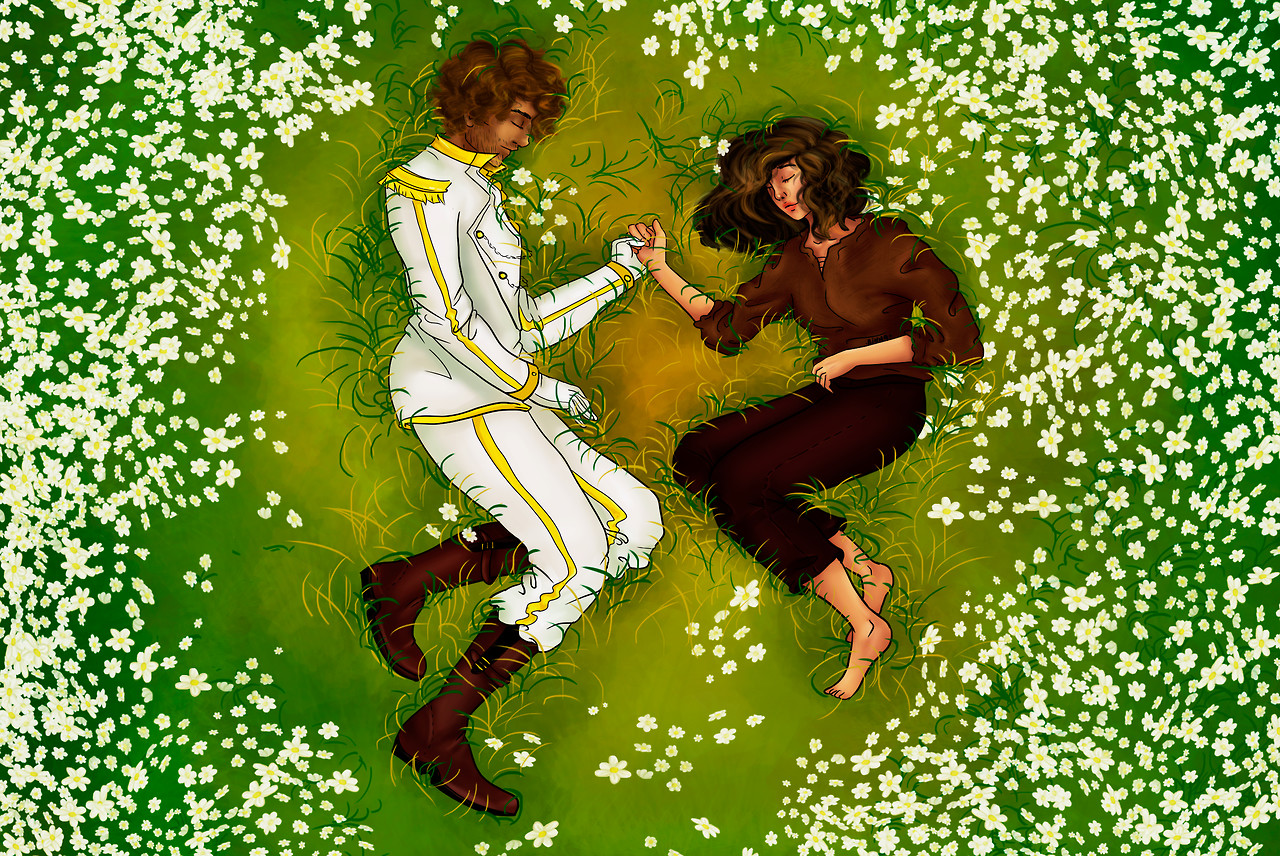
Example:
Brandon Sanderson’s Mistborn series has epic fantasy written all over it — but that doesn’t keep him from portraying love stories with detailed strokes. We are, of course, talking about the love story between Vin (a rebel and our protagonist) and the heir to the most powerful noble house in the city, Elend. They’re both developed characters with their own intricate backstories which contribute to the person they are in the story. Their relationship is a complicated one that’s often being tested — and at times looks like it might not make it.
Other Love Interests:
- Jamie Fraser (Outlander)
- Edward Cullen (Twilight)
- Alec Campion (Swordspoint)
- Arwen (Lord of the Rings)
- The Beast (Beauty and the Beast)
- Prince Po (Graceling)
- Buttercup (The Princess Bride)
5. The Friendly Creature
Some kind of mythical creature that has a bond with the Hero. The creatures are often large and intimidating at first glance, and, if aggressively provoked, have the power to cause damage. But the creature recognizes the Hero as being on the “good side” and forms a connection with them, often even helping them and getting them out of sticky situations. Friendly creatures are common to all types of fantasy, but especially children's fantasy, such as in the example below.

Example:
In the movie How to Train Your Dragon, the Night Fury is one of the rarest and most dangerous species of dragon. One day, teenager Hiccup shoots down a Night Fury. When he goes to find its body so that he can prove his accomplishment to the village, he finds himself unable to bring himself to kill it and instead sets it free. This act of compassion leads to an unlikely friendship between the awkward 15-year old and massive dragon whom he dubs “Toothless.”
More Friendly Creatures:
- Buckbeak (the Harry Potter series)
- The Ents (Lord of the Rings)
- The Wild Things (Where the Wild Things Are)
- The Coyote (Buffalo Gals, Won’t You Come Out Tonight)
6. The Villain
In high fantasy, this character often lives in some kind of menacing fortress in a land most would find inhospitable, surrounded by their unfalteringly devoted minions as they plot total world domination. Fire and brimstone abound, and the story revolves around the Hero trying to take this character down.
But the Villain can take other forms as well — they might be an entity, a concept, or even an aspect of human nature. The most interesting Villains are often not pure evil, and have at least some backstory that shows readers how they came to be “bad.” But whatever the case, the Villain is still the primary antagonist of the story, and they pose some kind of threat to the fantasy world the story takes place in.

Example:
Opal Koboi, the main antagonist from the Artemis Fowl series, might be an uber-intelligent pixie, but make no mistake: she’s got plans for world domination, and she’s got a weapon-engineering lab to help her achieve it. Her ultimate goal is to rally the fairy societies to war so that she can become empress and destroy humanity. She is prone to delusions of godhood and ultimately believes she’s the only one capable to control the world.
More Villains:
- Lord Farquaad (Shrek)
- The Kurgan (Highlander)
- Lord Voldemort (the Harry Potter series)
- The White Witch (The Chronicles of Narnia)
- Sauron (Lord of the Rings)
- Thulsa Doom (the Conan books)
- King Xerxes (300)
- Saruman (Lord of the Rings)
- The Wicked Witch of the West (The Wizard of Oz)
- Queen Bavmorda (Willow)
7. The Evil Creature
While the Friendly Creature sees the good in the Hero and bonds with them, the Evil Creatures cares about, well, no one, really. They might seem like they are on the side of the “bad guys,” but this cooperation only occurs if it furthers the Evil Creature’s agenda — which is, usually, to destroy.
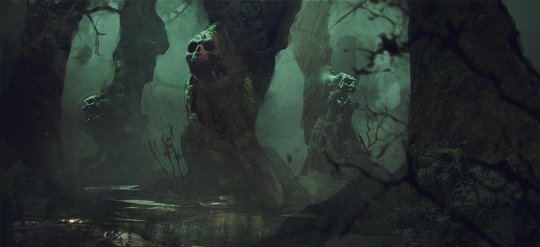
Example:
Here are a few characteristics of “the Wood” from Naomi Novik’s Uprooted: it warps everything around it, it gives birth to poisonous creatures, and produces crops that emanate destructive fumes that drive people dangerous and insane. Not to mention the actual trees that trap people in their trunks where they remain stuck in a form of limbo — constantly trying to escape the Wood that they have also become a part of. Yikes!
More Evil Creatures:
- The Balrog (Lord of the Rings)
- The Shelob (Lord of the Rings)
- Sandworms (Dune)
- Cthulhu (H. P. Lovecraft’s Mythos)
- The Dementors (the Harry Potter series)
- The Kraken (Clash of the Titans)
- The Megalodon Sharks (The Meg)
- Plague Demonspawns (Shattered Pillars)
- The Other Mother (Coraline)
8. The Other Hero
While this character helps save the day, they’re not quite a Sidekick: their goal is more to solve the conflict, not to support the Hero. Because of that goal, they do protect the Hero at all costs and help guide them through the journey, but they are more skilled than the Sidekick and generally have a knack for knowing just what to do.
The difference between the Other Hero and the Mentor is that the Other Hero is usually zeroed in on the conflict at hand, while the Mentor sees the bigger picture and has a broader, more deep level of knowledge of the unfolding story. In addition, the Other Hero provides more practical support to the Hero while the Mentor also gives emotional guidance. However, they are both usually highly skilled, and, like the Mentor, the Other Hero will do whatever it takes to help clear the path for the Hero.
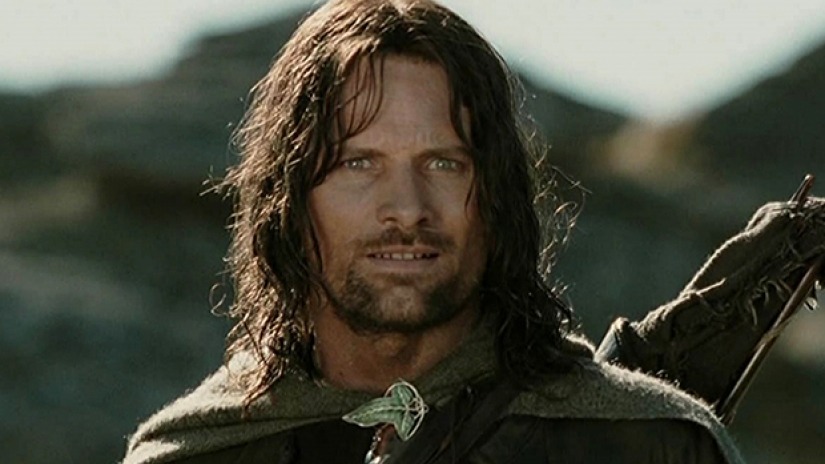
Example:
Well, the site TV Tropes has actually named this commonly recurring fantasy character after Aragorn, and who are we to contradict them? While the main characters in the Lord of The Rings are often split off engaging in various subplots, the story is mainly splintered into “Sam and Frodo” and the “Other 7.” And the Hero of the Other 7 is Aragorn. He is constantly kicking orc ass, he summons a dead army, he leads Rohan to victory at the Battle of Helm’s Deep. He keeps Sauron’s army busy while Frodo and Sam make their way to Mount Doom — oh, and then he makes sure Mordor is cleared of orcs while they sneak their way up the volcano. Shall we go on?
More Other Heroes:
- Bard (The Hobbit)
- Raven (HIVE)
- Professor McGonagall (the Harry Potter series)
- Wedge Antilles (X-Wing)
- Princess Leia (Star Wars)
- Madmartigan (Willow)
9. The Reluctant Villain
There are many potential facets to this character. Maybe they’ve fallen on hard times and are lured by the antagonist with promises of a better life if they only commit these few small (and bad) deeds. Or maybe they’ve been raised by unsavory people and they would lose everything they have if they turn away from them. Perhaps they are being threatened and don’t have a choice. Either way, they are an antagonistic force that is committed to the bad side to a degree. What differentiates them from the Villain is that they also hesitate at every bad move they make. You'll often find Reluctant Villains in grimdark fantasy, a subgenre characterized by morally gray characters and plotlines.
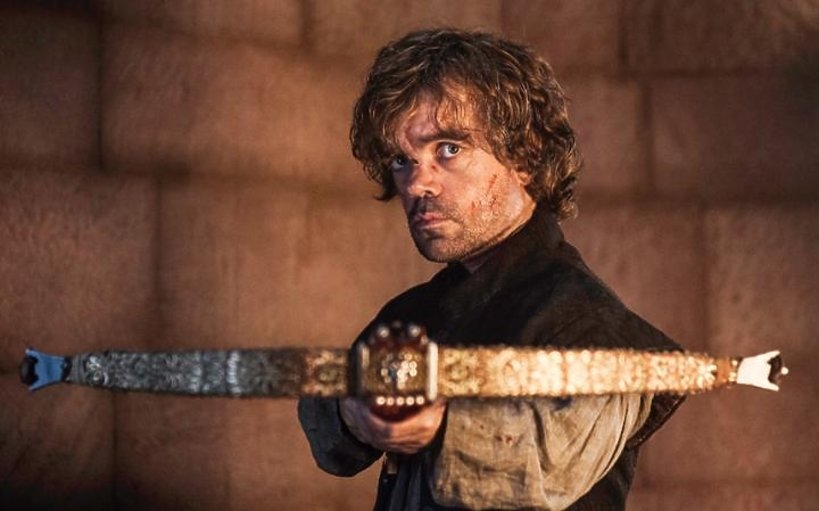
Example:
Tyrion Lannister is an interesting character because of his grey shades. He is part of a family of villains, and out of familial obligation, he spends the first few books acting in the best interest of Lannister House. However, acting in their best interest often requires committing villainous deeds. So while readers might be able to empathize with Tyrion’s desire to protect — and fit in with — his family, they still recognize many of his actions as “bad.”
More Reluctant Villains:
- Draco Malfoy (the Harry Potter series)
- Regent (Worm)
- The Henchman (Coraline)
- Jeremiah Colt (The Zombie Knight)
- The Angarak people (The Belgariad)
- Theon Greyjoy (Game of Thrones)
- Count Dracula (Blood for Dracula)
And that's a wrap on the nine most common types of fantasy character archetypes that you'll encounter in every book! If you'd like to read more about the genre, check out some of the following magical posts:
- Best Fantasy Writing Prompts (Read here)
- Kick-Ass Tips For Writing Fantasy (Read here)
- A Century of Fantasy: How the Genre's Changed Since the 1920s (Read here)
You can also find all these characters in the following fantasy books, lists courtesy of the Reedsy Discovery blog:
- The 100 Best Fantasy Series of All Time (Read here)
- The 30 Best YA Fantasy Books for Teens (Read here)
- 60 Best Fantasy Books of All Time (Read here)
- 20 Addictive Urban Fantasy Books (Read here)
- The 12 Best Epic Fantasy Books Like Game of Thrones (Read here)
Who are some of your all-time favorite fantasy characters? Let us know in the comments below!








3 responses
Phil says:
12/06/2019 – 11:21
I'd position the title of this article as "9 Common Fantasy Characters Roles (With Examples)" instead. Character types are more like race related such as humans, orcs, Els, dwarfs, giants...etc...
K. D. says:
17/06/2019 – 08:47
If, by Coyote from "Buffalo Gals, Won't You Come Out Tonight," you mean the character from Ursula K. Le Guin's story, I have to object to categorizing her as simply a "Friendly Creature." She's responsible for most of what happens in the story, including the third-person-close viewpoint character's survival(?) beyond the first few paragraphs, and - *stopping myself from writing a spoiler here, because I strongly recommend that everyone read the story themselves; it's beautifully written and memorable, i.e., it's by Ursula Le Guin*.
Yo mama says:
30/04/2020 – 15:56
This really helped me on my fantasy writing @ school thanks!!!!!!!!!!!!!!!!!!!!!!!!!!!!!!!!!!!!!!!!!!!!!!!!!!111🧙♂️🦹♀️